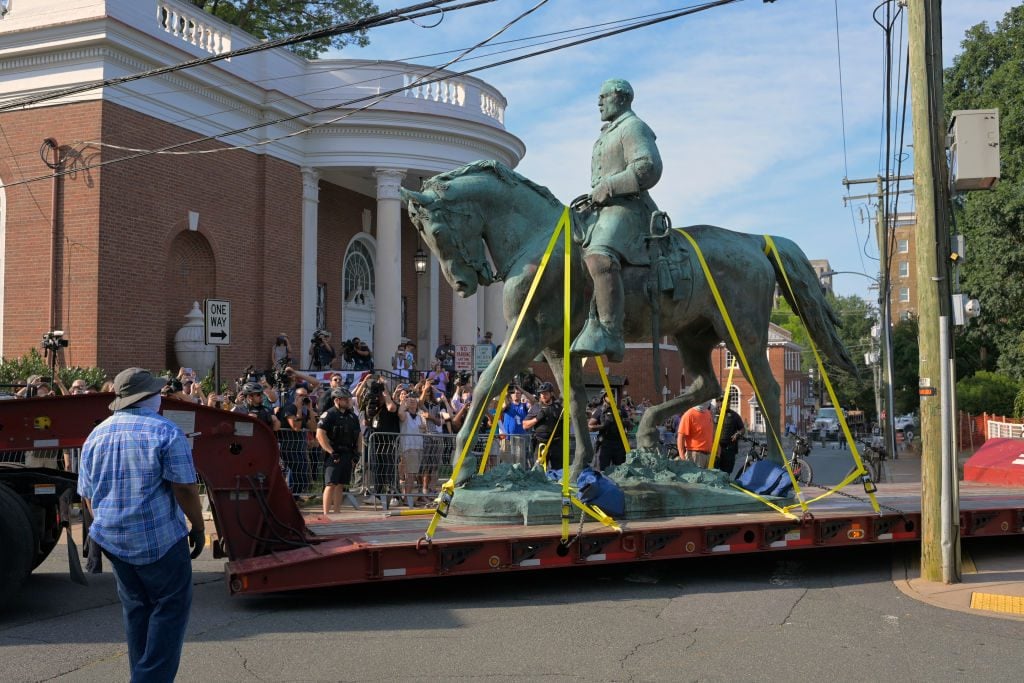Politics
Charlottesville’s Divisive Robert E. Lee Statue Will Be Melted Down to Create New Public Artwork
The proposal was put forward by a local heritage center.

The proposal was put forward by a local heritage center.

Caroline Goldstein

The fate of a controversial statue of Robert E. Lee that once stood in Charlottesville, Virginia, at the site of the deadly Unite the Right rally has finally been decided.
In an unanimous decision, the City Council voted to donate the statue to the local Jefferson School African American Heritage Center, which will melt it down and use it as raw material for a new public artwork, the New York Times reports.
The 4-0 vote was the final phase in a lengthy process that began in 2017, when the City Council ordered the statue’s removal along with several other Confederate monuments and memorials, which in turn sparked the far-right rally.
Two years later, that ruling was overturned by a court declaring that the statues were protected by state law and must remain in situ. But in April, Virginia’s Supreme Court decided that it could ultimately be taken down. In July, hundreds of onlookers watched as the bronze statue was lifted off its pedestal.
The city requested proposals from individual bidders and organizations who wanted to take possession of the statue, and after initially receiving more than 30 statements of interest, the proposals were whittled down to just six.

The statue of Confederate general Robert E Lee. Photo: John McDonnell/The Washington Post via Getty Images.
Among the proposals were ones from Statuary Park at Gettysburg, which wanted the statues but not the bases; LAXART, which wanted to take give the statues to artists for newly commissioned works; and an individual who wanted the sculptures as part of his personal collection in order to “save and preserve some of the south’s history.”
The only local proposal considered was that by the Jefferson School African American Heritage Center, which offered to pay for the Lee statue to be melted into bronze ingot blocks and transformed into a new work of art.
“Our aim is not to destroy an object, it’s to transform it,” the center’s executive director, Andrea Douglas, told Charlottesville Tomorrow. “It’s to use the very raw material of its original making and create something that is more representative of the alleged democratic values of this community, more inclusive of those voices that in 1920 had no ability to engage in the artistic process at all.”
The project is a coalition of Charlottesville organizations including the University of Virginia’s Memory Project, the artist-run gallery and studio space Visible Records, and the state humanities council.
The next step in the proposal is a six-month process of community engagement to decide what shape the new artwork will take.